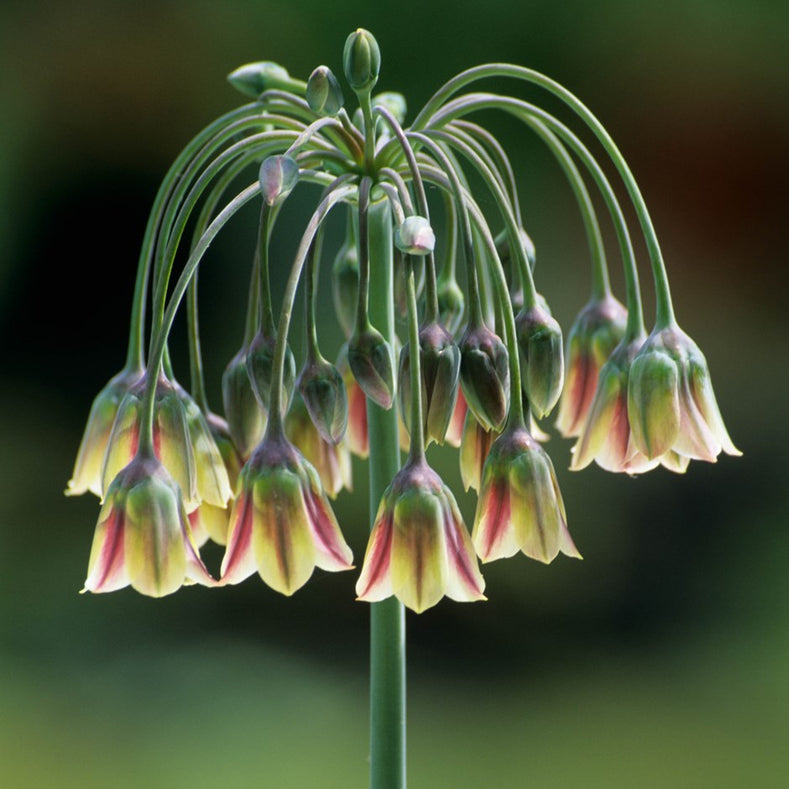Sicilian honey garlic also known as Allium Bulgaricum or Nectaroscordum Siculum, produces delicate and beautiful flowers that make perfect additions to ornamental gardens. This dainty flower is particularly delightful when combined with other plants and also attracts an abundance of bumblebees and other insects.
Where are they from?
Sicilian honey garlic (Nectaroscordum Siculum) may also be known as ‘Mediterranean Bells’. Originating from the Asian part of Turkey but now growing in other countries such as Southern France and Sicily. This flower boasts plenty of color and life to a garden and requires only some water-permeable soil.

Biodiversity
Nectar and pollen are crucial food for insects. Bees and bumblebees adore the flowers of Sicilian Honey Garlic and congregate to the nectar in packs. Butterflies also love the nectar! The insects pollinate other flowers whilst buzzing and fluttering from one flower to the other.

Bells
This flower blooms in May and June. At the beginning, the dozens of pointed flowers will grow straight up and then the delicate bells hang from the 90cm high stem! Cream-colored hues with little purple and green stripes throughout the inside and outside of the bells makes this flower combine wonderfully with other flower colors and tones.
Planting
Sicilian honey garlic is best planted in the autumn for spring-flowering. This flower loves a sunny area with a little bit of shade. Planting depth and distance between the bulbs is between 15-20 cm. Due to being hardy, they can be left in the ground during the winter to bloom again the following year.
Interesting facts:
- Sicilian honey garlic compliments late-flowering tulips!
- Flowers will stay attractive after flowering due to the decorative seed pods!
- Sicilian honey garlic has various scientific synonyms. One of these is Nectaroscordum siculum subsp. bulgaricum. In some countries, it may be known as ‘Bulgarian ornamental onion’.



